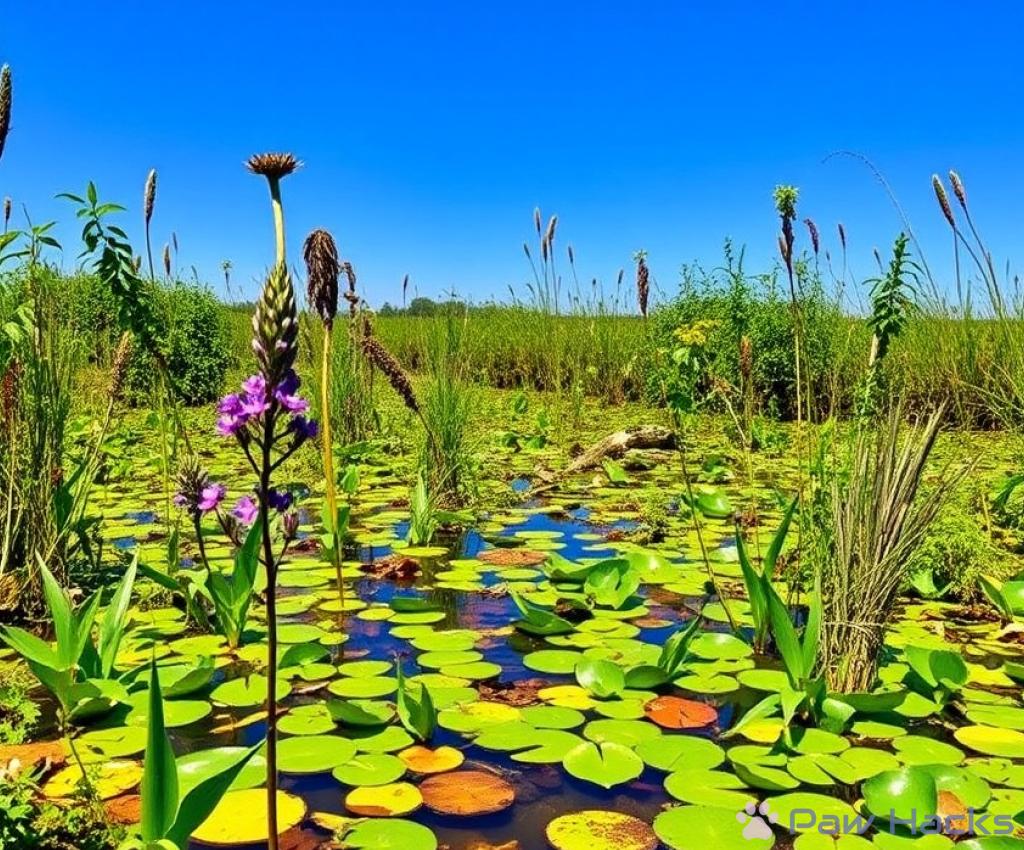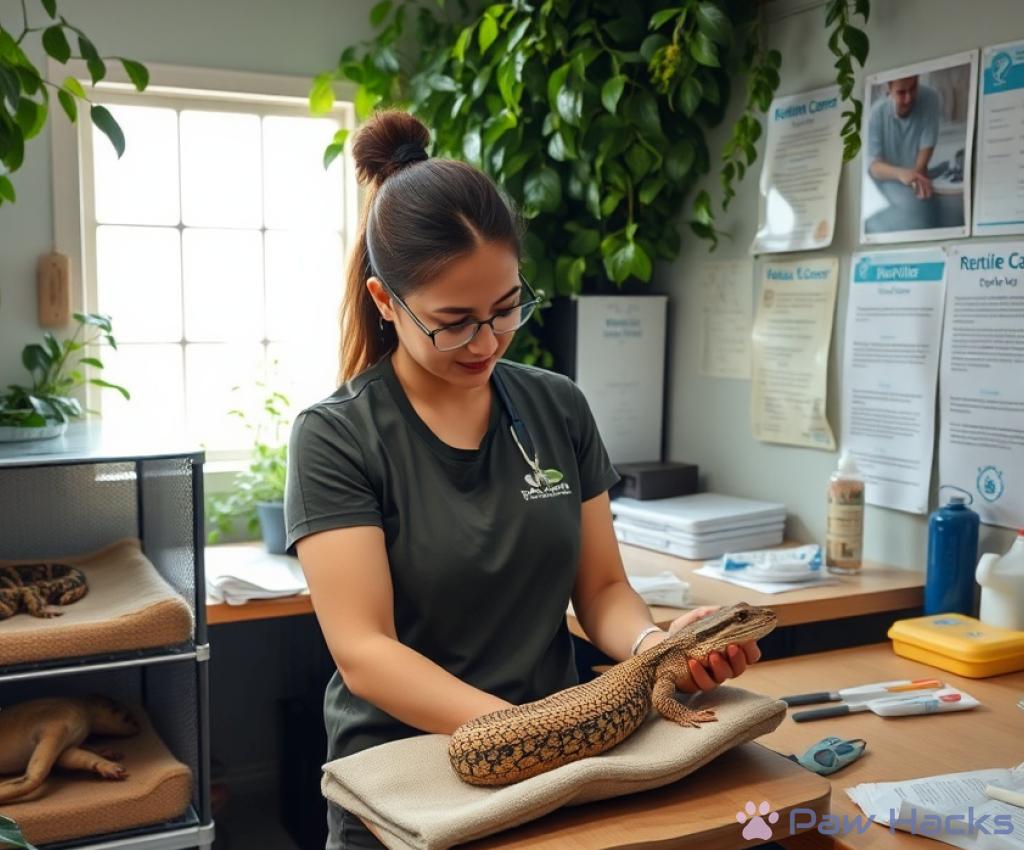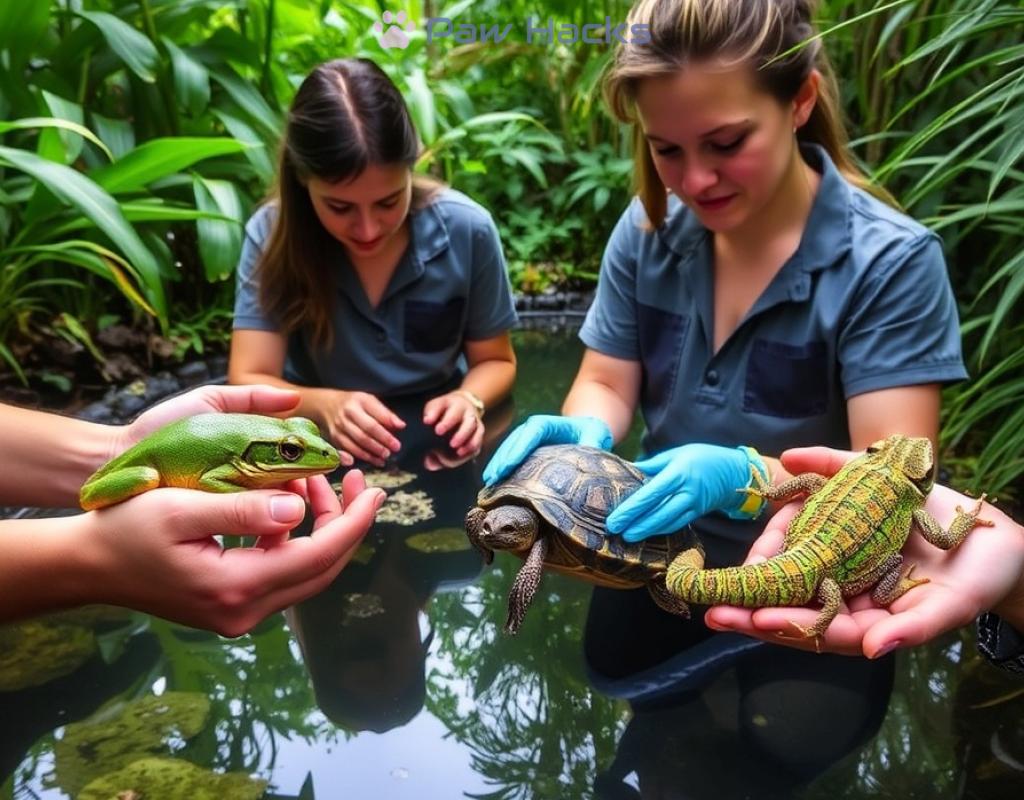Rescuing Reptiles and Amphibians
Understanding the Plight of Reptiles and Amphibians

The Silent Crisis
The world of reptiles and amphibians is facing a crisis that many are unaware of. These creatures, often seen as lesser animals, play crucial roles in our ecosystems. However, their populations are declining at an alarming rate due to various factors. Understanding their plight is the first step toward effective conservation efforts.
Factors Leading to Decline
Several threats contribute to the decline of reptiles and amphibians around the globe. Recognizing these factors can help us mobilize efforts for their rescue and rehabilitation. Here are some of the most significant threats:
- Habitat Loss: Urbanization, deforestation, and agriculture are shrinking their natural habitats.
- Pollution: Chemicals and waste products contaminate their environments, affecting their health and reproduction.
- Climate Change: Changes in temperature and weather patterns disrupt their breeding cycles and habitats.
- Invasive Species: Non-native species can outcompete or prey on native reptiles and amphibians.
- Overexploitation: Many species are collected for the pet trade or traditional medicine.
Taking Action
What can we do to help these fascinating creatures? Here are some actionable steps anyone can take to contribute to the rescue and conservation of reptiles and amphibians:
- Educate yourself and others about the importance of reptiles and amphibians.
- Support conservation organizations that focus on these species.
- Participate in local habitat restoration projects.
- Avoid purchasing animals from the pet trade unless they are ethically sourced.
- Report sightings of injured or stranded reptiles and amphibians to local wildlife authorities.
Effective Strategies for Habitat Restoration

Creating Sustainable Ecosystems
Restoring habitats is essential for ensuring the survival of reptiles and amphibians. By rebuilding their ecosystems, we can provide them with a suitable environment to thrive. This process involves not just protecting existing habitats but also creating new spaces that mimic their natural surroundings. Effective habitat restoration requires a multifaceted approach that addresses the unique needs of these species.
Community Involvement and Education
Engaging local communities is vital in habitat restoration efforts. When people understand the importance of reptiles and amphibians in their natural environments, they are more likely to take action. Educational programs can raise awareness about the roles these creatures play in maintaining ecological balance. Moreover, involving community members in restoration projects fosters a sense of ownership, which can lead to long-term commitment to conservation. For example, organizing workshops to teach locals about native plant species can significantly enhance restoration outcomes.
Innovative Restoration Techniques
Utilizing modern technology and innovative techniques can dramatically improve habitat restoration success rates. Techniques such as reforestation, where native plant species are reintroduced, can help restore landscapes that have been altered by human activity. Furthermore, employing bioengineering methods, such as creating artificial wetlands, can provide essential breeding grounds for amphibians. In addition, monitoring the health of restored habitats through regular assessments ensures that the restoration efforts are effective and sustainable.
| Restoration Strategy | Benefits |
|---|---|
| Reforestation | Enhances biodiversity and stabilizes soil |
| Community Engagement | Fosters local stewardship and educates about conservation |
| Bioengineering | Creates essential habitats for breeding and feeding |
How to Safely Rescue and Rehabilitate Injured Species

Rescuing injured reptiles and amphibians requires a thoughtful approach, as these delicate creatures need specific care to survive and thrive. Whether you encounter a turtle on the road or a frog in distress, knowing how to handle the situation can make a significant difference in their recovery. It is essential to act quickly yet carefully, ensuring that both the animal and yourself remain safe during the rescue process.
Understanding the Initial Response
When you come across an injured reptile or amphibian, the first step is to assess the situation from a distance. Observe the animal’s condition without causing it further stress. If the creature appears to be in immediate danger, such as being in the middle of a busy road, it is crucial to act swiftly. However, never attempt to handle the animal without proper knowledge; some species can bite or carry diseases. Instead, use a container or a towel to gently scoop them up, ensuring minimal contact. Always wear gloves to protect yourself and the animal.
Providing Appropriate Care and Rehabilitation
Once you have safely rescued the creature, the next step is to provide the necessary care. Begin by placing the animal in a quiet, secure environment, away from pets and loud noises. Hydration is critical; offer fresh, clean water in a shallow dish, as many reptiles and amphibians may be dehydrated after their ordeal. Depending on the species, you may need to create a suitable habitat that mimics its natural environment. Research the specific needs of the animal, such as temperature, humidity, and diet. For instance, some amphibians require moist environments, while reptiles may need basking spots to regulate their body temperature.
Once the animal has stabilized, contact a local wildlife rehabilitator or veterinarian experienced with reptiles and amphibians. They can provide expert guidance and further treatment if necessary. Rehabilitation may involve monitoring the animal’s health over time, ensuring it regains strength and can eventually return to its natural habitat. Importantly, it is illegal in many places to keep wild animals without a permit, so working with professionals is essential to ensure the animal’s well-being and compliance with local laws.
The Role of Community Involvement in Conservation Efforts
As the plight of reptiles and amphibians continues to escalate, the need for community involvement in conservation has never been more urgent. Local communities can be a powerful force for change, bringing awareness and action to the forefront of conservation efforts. By engaging community members, we can foster a culture that values these often-overlooked creatures, ensuring their survival for future generations.
Empowering Local Voices
Community involvement begins with empowering local voices to speak up for reptiles and amphibians. When individuals understand the significance of these species in their ecosystems, they become motivated to protect them. By organizing educational workshops and nature walks, local organizations can teach residents about the various roles that reptiles and amphibians play, such as controlling insect populations and serving as indicators of environmental health. Such initiatives not only raise awareness but also inspire a sense of responsibility towards wildlife conservation.
Building Collaborative Efforts
Another crucial aspect of community involvement is building collaborative efforts between local residents, conservation groups, and government agencies. Through partnerships, communities can leverage resources and expertise to create impactful conservation programs. For instance, local volunteers can assist in habitat restoration projects, which not only benefit reptiles and amphibians but also enhance the beauty and health of the local environment. Collaboration can also extend to citizen science projects, where community members can collect valuable data on reptile and amphibian populations, contributing to broader research initiatives. This collective effort strengthens community ties while making a tangible difference in conservation outcomes.
Ultimately, the role of community involvement in conservation cannot be overstated. When individuals come together, share knowledge, and take action, they become champions for reptiles and amphibians, helping to secure a healthier future for these vital species. By recognizing their responsibility as stewards of the environment, communities can transform their local landscapes into safe havens for wildlife, ensuring that these remarkable creatures continue to thrive.
Educating Future Generations: The Key to Long-Term Protection
As we face a growing crisis with reptile and amphibian populations, it becomes increasingly clear that education is a fundamental component of effective conservation. By instilling a sense of stewardship in younger generations, we can ensure that these vital creatures are protected for years to come. Engaging youth through educational programs can create a ripple effect, leading to broader community involvement in conservation efforts.
Incorporating Wildlife Education in Schools
One of the most effective ways to educate future generations about reptiles and amphibians is by integrating wildlife education into school curriculums. This can involve hands-on learning experiences, where students can observe these animals in their natural habitats or through virtual field trips to wildlife centers. By making learning interactive and relatable, students can develop a lasting appreciation for these species.
Community Programs and Workshops
Beyond formal education, community programs play a pivotal role in raising awareness about reptiles and amphibians. Organizing workshops that encourage participation can significantly enhance public knowledge and engagement. These workshops may include activities such as:
- Reptile and amphibian identification walks, where participants learn to recognize local species.
- Habitat restoration projects that allow community members to contribute hands-on to conservation efforts.
- Guest speaker events featuring wildlife experts who can share their knowledge and experiences.
By providing these opportunities, communities create a culture of respect and responsibility towards wildlife, ensuring that future generations understand the importance of reptiles and amphibians in our ecosystems.
Utilizing Technology for Engagement
In today’s digital age, technology can be a powerful tool for educating youth about wildlife conservation. Interactive apps and online platforms can provide engaging content that educates users about the roles of reptiles and amphibians in nature. Additionally, social media campaigns can spread awareness quickly, reaching a wider audience that includes younger individuals who are often more connected online.
By fostering a generation that is informed and passionate about protecting reptiles and amphibians, we can build a brighter future for these creatures. Education is indeed the cornerstone of long-term protection, creating advocates who will continue the fight for wildlife conservation long after today.
Share this content:



